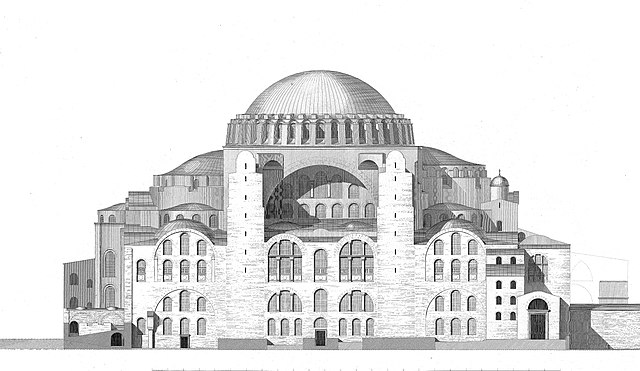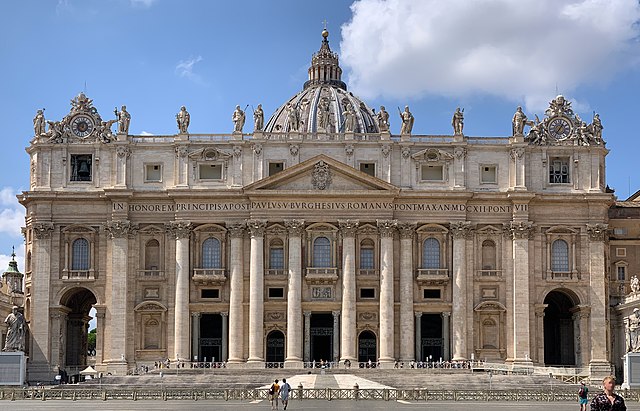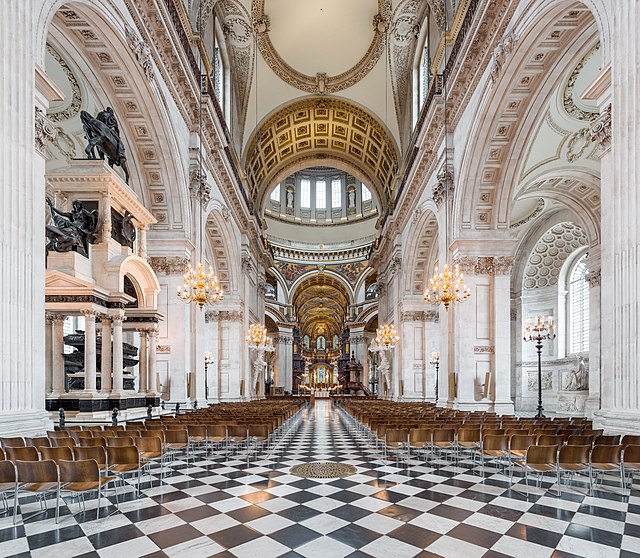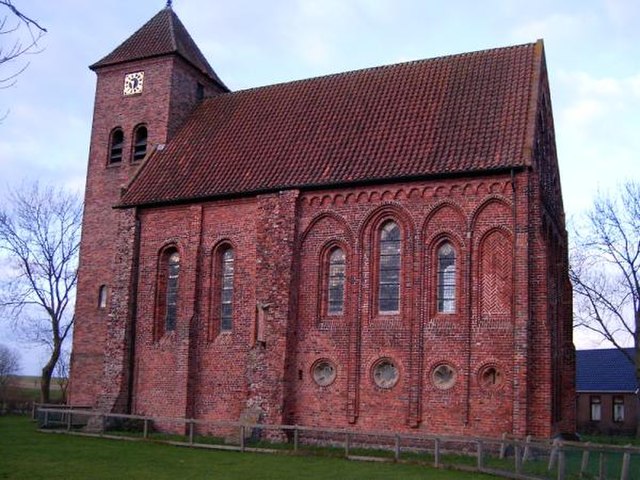The rood screen is a common feature in late medieval church architecture. It is typically an ornate partition between the chancel and nave, of more or less open tracery constructed of wood, stone, or wrought iron. The rood screen was originally surmounted by a rood loft carrying the Great Rood, a sculptural representation of the Crucifixion. In English, Scottish, and Welsh cathedrals, monastic, and collegiate churches, there were commonly two transverse screens, with a rood screen or rood beam located one bay west of the pulpitum screen, but this double arrangement nowhere survives complete, and accordingly the preserved pulpitum in such churches is sometimes referred to as a rood screen. At Wells Cathedral the medieval arrangement was restored in the 20th century, with the medieval strainer arch supporting a rood, placed in front of the pulpitum and organ.

15th-century rood screen from the chapel of St Fiacre at Le Faouet Morbihan, France, including the two thieves on either side of Christ
Crucifixion atop Rood Screen, Anglo-Catholic Church of the Good Shepherd (Rosemont, Pennsylvania)
East end of the 8th-century Roman basilica of Santa Maria in Cosmedin in Rome, showing the altar, under a 13th-century ciborium behind a templon screen of columns. The foreground forms the liturgical choir, surrounded by low cancelli screens, to which are attached two ambos, left and right.
Rood and beam of 1275, but no screen, at Öja Church on the island of Gotland in Sweden, where many exceptional roods have survived.
Church architecture refers to the architecture of Christian buildings, such as churches, chapels, convents, seminaries, etc. It has evolved over the two thousand years of the Christian religion, partly by innovation and partly by borrowing other architectural styles as well as responding to changing beliefs, practices and local traditions. From the Early Christianity to the present, the most significant objects of transformation for Christian architecture and design were the great churches of Byzantium, the Romanesque abbey churches, Gothic cathedrals and Renaissance basilicas with its emphasis on harmony. These large, often ornate and architecturally prestigious buildings were dominant features of the towns and countryside in which they stood. However, far more numerous were the parish churches in Christendom, the focus of Christian devotion in every town and village. While a few are counted as sublime works of architecture to equal the great cathedrals and churches, the majority developed along simpler lines, showing great regional diversity and often demonstrating local vernacular technology and decoration.

Image: Saint Sophia, Constantinopolis
Image: Basilique Saint Pierre Vatican (VA) 2021 08 25 4
Image: St Paul's Cathedral Nave, London, UK Diliff
The 800-year-old Ursuskerk of Termunten in the north of the Netherlands








